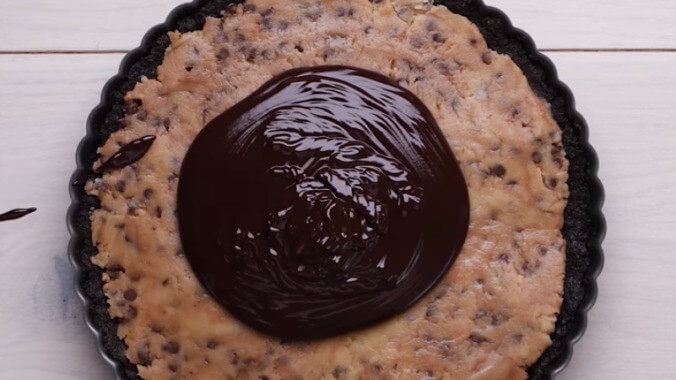If you’ve logged onto Facebook anytime in the past few years (and, just as a reminder, you really shouldn’t be doing that), you’ve probably noticed people posting “yummy” baking and kitchen hack videos that look either:
D) all of the above
Hey, you may have even taken Maegan Jean up on her suggestion of “Deep Fried Ice Cream Tacos,” only find yourself staring down at a plate of soggy cookie dough and molten, curdled dairy while wondering how your life led you to this point.
Well, it might not come as a huge surprise, but those videos are pretty much straight-up bullshit. However, what is a little startling is that, not only are these how-to videos unrealistic, there’s also pretty much no different between them and far-right fake news clickbait in that they all are vacuous, algorithmic cash-grabs peddling potentially harmful information.
As Chris Fox, Ann Reardon, and the BBC point out in the above debunking video, these “recipes” from companies like Blossom and So Yummy are not really designed to teach you fun potluck dinner tricks, but rather to rack up ad revenue through the click-incentivized algorithms that currently rule the internet. And, so far, they’ve been extremely successful, having “clocked up billions of views on YouTube and Facebook,” as Fox explains.
The problem isn’t that your final product doesn’t resemble the example dish—c’mon, that’s a given—it’s that some of the the recipes are straight-up dangerous—one, for example, involves pouring boiling caramel over an electric whisk attachment (the caramel is hot enough to melt plastic).
In the end, Fox and crew suggest what you’re probably thinking yourself at this point—screw the people behind these dangerous cash-grab videos. Another day, another reason for us to unplug our computers and forget the internet ever existed.

